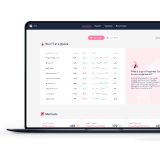Nestlé, one of the world’s largest food and beverage companies, embarked on a transformative journey to modernize its IT Service Management (ITSM) by embedding experience management into the core of its operations. Led by Osvaldo Santos, the IT Service Experience team has focused on creating a globally consistent, human-centric IT service experience. This case study explores Nestlé’s approach to enhancing employee satisfaction and the tangible benefits it has brought to their organization.
Background
Nestlé has over 275,000 employees across the globe, interacting daily with a complex network of IT systems, applications, and services. Recognizing the importance of employee satisfaction in driving overall business success, Nestlé’s IT department initiated a strategy to improve IT service experiences, emphasizing a smooth, intuitive, and efficient support environment.
Objectives
- Shift from project management to product management in IT service delivery.
- Implement an IT service experience model comparable to top consumer experiences.
- Enhance employee satisfaction to drive improved consumer outcomes and shareholder value.
Strategy and Implementation
- Leadership Alignment and Strategic Objectives:
The journey started with securing executive alignment, enabling clear, top-down objectives. With a well-defined vision for IT experience management, supported by Nestlé's CIO, Nestlé set out with specific, measurable goals for improving IT service perception. - Data-Driven Experience Measurement:
Nestlé partnered with HappySignals to measure and analyze user satisfaction across its IT services. This enabled the team to capture valuable insights from experience data, offering actionable feedback on areas needing improvement, such as response times and service efficiency. - Experience Management Office:
A global, cross-functional team was created to manage IT experience, known as the Experience Management Office. The team’s role is to coordinate efforts, share best practices, and localize solutions across regions, providing a unified service experience. - Product Management Integration:
By moving from a project-based to a product-based approach, Nestlé’s IT team ensured that IT products and services continuously evolve to meet changing employee needs. The focus shifted to delivering long-term improvements rather than one-time projects. - Continuous Improvement Culture:
Nestlé encourages a mindset of continuous learning and adaptation within IT, striving for constant improvements informed by real feedback and iterative problem-solving.
Key Results
- Enhanced Employee Satisfaction: Experience data illuminated key improvement areas, enabling rapid action and notable service enhancements.
- Collaborative Environment: Cross-functional collaboration and alignment with partners increased, with common goals and metrics driving collective improvement efforts.
- Proactive Issue Resolution: The use of real-time feedback allowed teams to resolve issues promptly, as demonstrated by improvements in Wi-Fi connectivity for a Northeast Asian team following employee feedback.
- Global Reach and Impact: The IT experience initiative reached 80% of Nestlé’s markets worldwide, with a goal to engage the remaining 20% in the coming year.
- Benchmarking and Best Practices: Through internal benchmarking, Nestlé is fostering a culture of continuous improvement, sharing success stories to inspire and inform IT teams across regions.
Lessons Learned
- Build Experience Champions: Establish a network of advocates to help localize and promote experience management initiatives across regions.
- Embrace Agile and Start Small: Beginning with manageable, smaller initiatives allows for quick wins and learning opportunities that pave the way for larger-scale rollouts.
- Prioritize Change Management: Focusing on the people aspect of IT transformation ensures that technology solutions have a meaningful impact on employee experiences.
- Feedback and Communication: Closing the feedback loop with users builds trust and demonstrates Nestlé’s commitment to continuous improvement.
- Integrate Experience Data with Technical Data: Combining experience metrics with technical insights provides a more comprehensive view of service performance and areas for improvement.
Key Takeaways
- Data-Driven Decisions Are Key: Using experience data as a foundation, Nestlé was able to make informed decisions that directly improved employee satisfaction and operational efficiency.
- Human-Centric IT Drives Value: By focusing on employee satisfaction, Nestlé’s IT department created a ripple effect that benefits customers and shareholders alike.
- Cross-Functional Teams Enhance Agility: A global experience management office facilitated rapid deployment of improvements, helping to localize solutions for specific regional challenges.
- Leadership Alignment Is Essential: Support from senior executives created momentum for the initiative, helping Nestlé to secure resources, set priorities, and scale the program effectively.
- Continuous Improvement Is a Journey: Nestlé’s focus on iterative learning and improvement has cultivated a resilient culture that continues to drive enhancements in IT services.
COMPANY
- Industry: Food and Beverages
- Employees: 275,000
- ITSM Platform: ServiceNow
- ServiceDesk: Internal
- HappySignals since: Dec 2022







